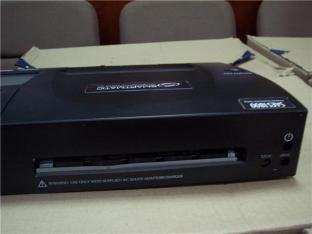The ascentofe–voting in the world has been sustained, and proof of it is the fact that nowadays 24.8% of the world’s population (1,741,427,387 people) use machines to exert their right to suffrage. This technological liftoff in terms of voting has not been easy, and even now, in spite of its many success cases, automation not only has its fair share of supporters, but has also been threatened by detractors.
While those who support the advance from manual to electronic voting highlight the unassailable qualities of technological development, such as the speed of results, the precision of scrutiny, the simplicity of the process, and the inviolability of vote secrecy, big worries are related to forgery of the emitted ballot or its blocking so that it cannot be tallied, as well as the difficulty to audit the system.
Thus, the opportunity to emit suffrage through the different solutions of e-voting has sparked doubts that have turned into myths, but it all boils down to reliability. Here we must point out that countries like Brazil, USA, Belgium, Venezuela, and the Phillippines have decided to modernize suffrage and tried to solve—each with different mechanisms and automated modes—public resistance and that of experts.
E-voting found the way to overcome distrust and fear through its development and reinforcement of all phases of the process. An example that overturns excuses about the impossibility of auditing automated elections is represented by Venezuela. In this country, all the electoral material is audited before each election: lists of those who are eligible as members of the board of elections and polling staff, the software used to select these people, voting machines, fingerprint scanners, indelible ink, etc. After the elections, a closing audit is carried out, making sure that 54% of the ballot boxes match the results reflected on the automated scrutiny manifests. One week later, the final audit— a general inspection of the process—takes place.
In terms of an eventual violation of the system, which is seen as one of the biggest challenges faced by e-voting, the truth is that the software used by voting machines has been conceived to use digital signatures, which are cryptographic tools with shared codes—in some countries, political parties and the electoral body have these codes—which protect the equipments, systems, and memories from irregularities related to their use prior to elections, errors in criteria, and requirements from the process. Also, digital signatures prevent contents from any modification.
Another security aspect that has been efficiently covered in countries where electoral technology has been implemented is the fact that each voter can only vote once and cannot misappropriate another identity. The formula for this is the employment of biometric identification equipments where each person gets their fingerprint scanned for identity verification. In Brazil, voting machines can only be activated for use after the recognition of each voter’s fingerprint.
Nowadays, many different technologies available in the market offer solutions for these and other concerns associated to the complex process of designing and executing automated elections. Myths and doubts have been dissipated in most cases with successful experiences, but there are still some who continue generating pressure and distrust due to their political and economic interests.


